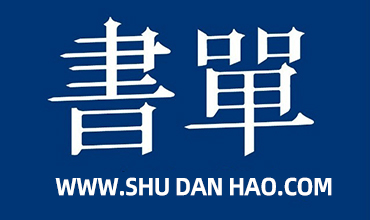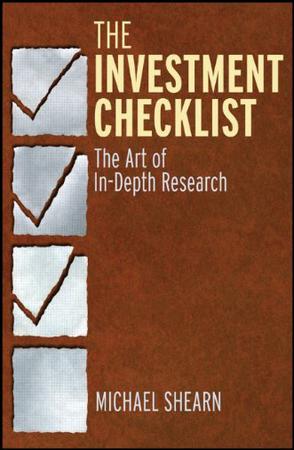
Michael Shearn《The Investment Checklist》
书刊介绍
内容简介
A practical guide to making more informed investment decisions Investors often buy or sell stocks too quickly. When you base your purchase decisions on isolated facts and don't take the time to thoroughly understand the businesses you are buying, stock-price swings and third-party opinion can lead to costly investment mistakes. Your decision making at this point becomes dangerous because it is dominated by emotions. The Investment Checklist has been designed to help you develop an in-depth research process, from generating and researching investment ideas to assessing the quality of a business and its management team. The purpose of The Investment Checklist is to help you implement a principled investing strategy through a series of checklists. In it, a thorough and comprehensive research process is made simpler through the use of straightforward checklists that will allow you to identify quality investment opportunities. Each chapter contains detailed demonstrations of how and where to find the information necessary to answer fundamental questions about investment opportunities. Real-world examples of how investment managers and CEOs apply these universal principles are also included and help bring the concepts to life. These checklists will help you consider a fuller range of possibilities in your investment strategy, enhance your ability to value your investments by giving you a holistic view of the business and each of its moving parts, identify the risks you are taking, and much more. Offers valuable insights into one of the most important aspects of successful investing, in-depth research Written in an accessible style that allows aspiring investors to easily understand and apply the concepts covered Discusses how to think through your investment decisions more carefully With The Investment Checklist, you'll quickly be able to ascertain how well you understand your investments by the questions you are able to answer, or not answer, without making the costly mistakes that usually hinder other investors.
作品目录
Preface xi
Acknowledgments xix
Chapter 1 How to Generate Investment Ideas 1
How Investment Opportunities Are Created 1
How to Filter Your Investment Ideas 14
Using a Spreadsheet to Track Potential and Existing Holdings 19
Chapter 2 Understanding the Business—The Basics 21
1. Do I want to spend a lot of time learning about this business? 22
2. How would you evaluate this business if you were to become its CEO? 23
3. Can you describe how the business operates, in your own words? 26
4. How does the business make money? 28
5. How has the business evolved over time? 29
6. In what foreign markets does the business operate, and what are the risks of operating in these countries? 30
Chapter 3 Understanding the Business—from the Customer Perspective 39
7. Who is the core customer of the business? 41
8. Is the customer base concentrated or diversified? 42
9. Is it easy or diffi cult to convince customers to buy the products or services? 43
10. What is the customer retention rate for the business? 44
11. What are the signs a business is customer oriented? 46
12. What pain does the business alleviate for the customer? 49
13. To What degree is the customer dependent on the products or services from the business? 49
14. If the business disappeared tomorrow, what impact would this have on the customer base? 50
Chapter 4 Evaluating the Strengths and Weaknesses of a Business and Industry 53
15. Does the business have a sustainable competitive advantage and what is its source? 54
16. Does the business possess the ability to raise prices without losing customers? 68
17. Does the business operate in a good or bad industry? 73
18. How has the industry evolved over time? 77
19. What is the competitive landscape, and how intense is the competition? 79
20. What type of relationship does the business have with its suppliers? 89
Chapter 5 Measuring the Operating and Financial Health of the Business 97
21. What are the fundamentals of the business? 98
22. What are the operating metrics of the business that you need to monitor? 100
23. What are the key risks the business faces? 105
24. How does infl ation affect the business? 111
25. Is the business’s balance sheet strong or weak? 113
26. What is the return on invested capital for the business? 123
Chapter 6 Evaluating the Distribution of Earnings (Cash Flows) 137
27. Are the accounting standards that management uses conservative or liberal? 138
28. Does the business generate revenues that are recurring or from one- off transactions? 146
29. To what degree is the business cyclical, countercyclical, or recession-resistant? 148
30. To what degree does operating leverage impact the earnings of the business? 152
31. How does working capital impact the cash fl ows of the business? 162
32. Does the business have high or low capital-expenditure requirements? 167
Chapter 7 Assessing the Quality of Management—Background and Classification: Who Are They? 173
33. What type of manager is leading the company? 176
34. What are the effects on the business of bringing in outside management? 180
35. Is the manager a lion or a hyena? 183
36. How did the manager rise to lead the business? 186
37. How are senior managers compensated, and how did they gain their ownership interest? 192
38. Have the managers been buying or selling the stock? 202
Chapter 8 Assessing the Quality of Management—Competence: How Management Operates the Business 209
39. Does the CEO manage the business to benefi t all stakeholders? 210
40. Does the management team improve its operations day- to- day or does it use a strategic plan to conduct its business? 213
41. Do the CEO and CFO issue guidance regarding earnings? 219
42. Is the business managed in a centralized or decentralized way? 222
43. Does management value its employees? 225
44. Does the management team know how to hire well? 239
45. Does the management team focus on cutting unnecessary costs? 247
46. Are the CEO and CFO disciplined in making capital allocation decisions? 248
47. Do the CEO and CFO buy back stock opportunistically? 250
Chapter 9 Assessing the Quality of Management—Positive and Negative Traits 255
48. Does the CEO love the money or the business? 256
49. Can you identify a moment of integrity for the manager? 264
50. Are managers clear and consistent in their communications and actions with stakeholders? 268
51. Does management think independently and remain unswayed by what others in their industry are doing? 275
52. Is the CEO self-promoting? 276
Chapter 10 Evaluating Growth Opportunities 281
53. Does the business grow through mergers and acquisitions, or does it grow organically? 281
54. What is the management team’s motivation to grow the business? 282
55. Has historical growth been profi table and will it continue? 283
56. What are the future growth prospects for the business? 284
57. Is the management team growing the business too quickly or at a steady pace? 296
Chapter 11 Evaluating Mergers & Acquisitions 305
58. How does management make M&A decisions? 305
59. Have past acquisitions been successful? 310
Appendix A Building a Human Intelligence Network 323
Evaluating Information Sources 324
How to Locate Human Sources 324
How to Contact Human Sources—and Get the Information You Want 328
Create a Database of Your Interviews for Future Reference 329
Appendix B How to Interview the Management Team 331
Ask Open- Ended Questions 332
Be Aware of the Danger of Face- to- Face Assessments of Managers 333
Appendix C Your Investment Checklist 335
Notes 339
About the Author 351
Index 353
相关推荐
-

MSN理财《白领理财日记之大城小钱》
工资不涨,房价飞涨,CPI飞涨,我们怎么办?利用每个月有数的那点工资,怎么筹划好未来的房子、子女的教育、自己的养老?玩微博,
-

何之《短线赌钱与长线赌命》
《短线赌钱与长线赌命:重塑我们的市场观体系》内容简介:从交易时间长短而言,如果我们把短期折投机行为看作一种赌博的话,那我要
-
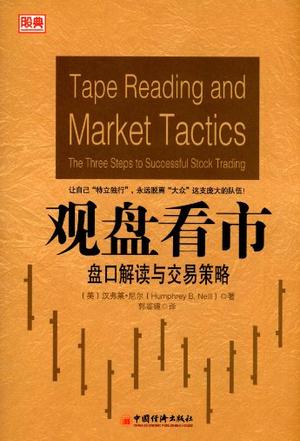
汉弗莱·尼尔《观盘看市》
《观盘看市》实为解读投资交易中盘面变化和量价关系的经典之作,畅销不衰。《观盘看市》通过量价关系把握市场行情,洞察人性机微
-
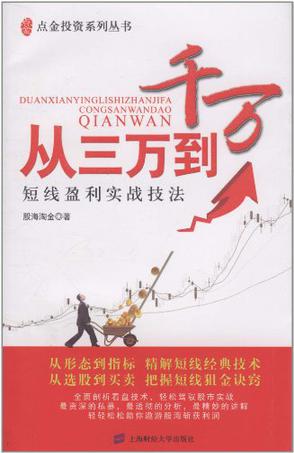
股海淘金《从三万到千万》
《从三万到千万:短线盈利实战技法》全面剖析看盘技术,轻松驾驭股市实战,最资深的私募,最透彻的分析,最精妙的讲解,轻轻松松助
-
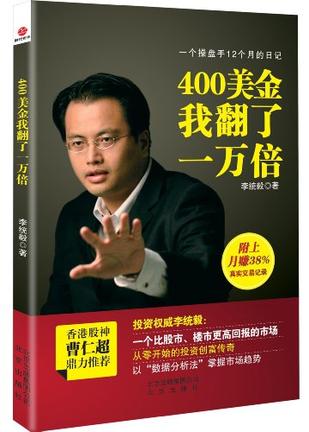
李统毅《400美金我翻了一万倍》
《一个操盘手12个月的日记:400美金我翻了一万倍》讲述的是一个发生在华尔街的真实创富传奇:作者如何从零开始,白手起家。作者从
-

水晶-天穹的繁星
水晶-天穹的繁星 内容简介 《大雅鉴藏系列》详实、精确地展现了现代艺术品收藏的迷人世界。每册均以多幅清晰的彩色图片和专业、简洁、内容丰富的文字为普通读者打开了一...
-
![[美] 卡西迪《最佳卖出点》](http://oss.shudanhao.com/caiji/chazidian/2023/5950.jpg)
[美] 卡西迪《最佳卖出点》
《最佳卖出点:一部指导卖出决策的综合指南》作者以其丰富的投资经验,为你确定股票市场目标,教你掌握最佳卖出时机,以更加合理,
-

保值玺印
保值玺印 内容简介 这是本古印收藏读本。全书分十一个部分,内容包括:五大印材(包括美石印材、金属类印材、植物类印材、动物类印材、泥陶类印材)、古今名人藏书章、印...
-
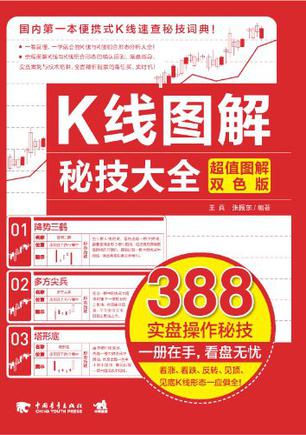
张振东|王真《K线图解秘技大全》
主要经历某私幕基金技术总监和著名操盘手《半岛都市报》今理财的股票投资专栏撰稿人《青岛早报》第一财经的股票投资专栏撰稿人多
-

炒股.别踩这8大雷区
炒股.别踩这8大雷区 本书特色 本书通过对风行国内的30多位世界级投资大师的投资理念、投资案例经过消化、整理、对比,运用本土化的语言,将炒股常见的雷区归为这样8...
-
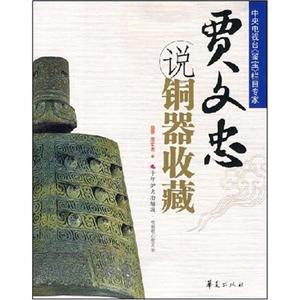
贾文忠说铜器收藏
贾文忠说铜器收藏 本书特色 《贾文忠说铜器收藏》全书还穿插有各种小资料,为读者提供铜器辨伪与收藏中具有代表性的实战案例、趣闻雅事,让读者能够在学习各种理论的同时...
-
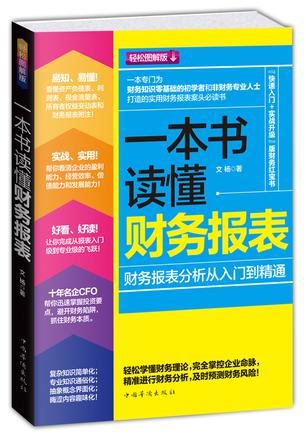
文杨《一本书读懂财务报表》
一本专门为财务知识零基础的初学者和非财务专业人士编写的实用财务报表案头必读书。有趣的案例+生动的文字+翔实的数据分析+精美的
-
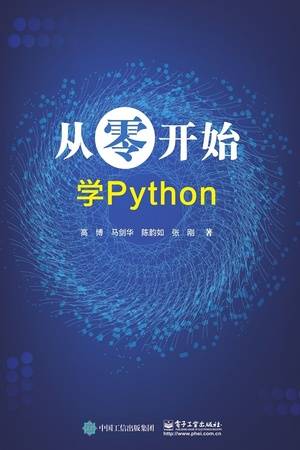
从零开始学Python
《从零开始学Python》内容简介:本书主要介绍了Python语言的基础知识,包括准备开发环境,基本概念,数据类型与运算符,字符串,列
-

《富爸爸创业投资计划(全五册)》书籍《富爸爸创业投资计划-(全五册)》
罗伯特•清崎清崎生长在夏威夷,是第四代日裔美国人。他出生在一个教师家庭,大学毕业后加入美国海军陆战队,作为军官和舰载武装直
-
![[美] 罗塞尔·罗伯茨《在超市遇见亚当·斯密》](http://oss.shudanhao.com/caiji/chazidian/2023/7300.jpg)
[美] 罗塞尔·罗伯茨《在超市遇见亚当·斯密》
《在超市遇见亚当·斯密》教你逛超市就能学会的价格经济学!下班学点经济学,聪明赚钱聪明花!无论钱多钱少,价格才决定你的购买
-

韩愈《价值投机》
品味商机系列。生存必然含有投机的成份,所谓“投机”,就是抓住机遇,决定投资方向,实现利润最大化。当一个人所冒的风险是他无
-
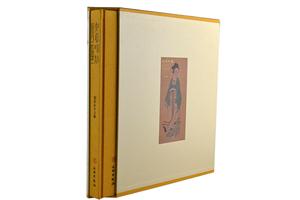
知真味雅
知真味雅 本书特色 《知真味雅:中国艺术精粹》收录了数十件艺术品,包括青铜器、中国绘画和瓷器杂件,中国艺术的三个主要门类.画册的副题为《中国艺术精粹》,不仅是因...
-

魅力独具的唐墓壁画
魅力独具的唐墓壁画 本书特色 陕西作为中华文明的发祥地之一,有着辉煌的历史和厚重的文化,诞生过周、秦、汉、唐等十三个王朝,因而地面皇陵密布,地下国宝丰富。而陕西...
-

财富自由
财富自由 本书特色 为什么富人开的车的平均价格只有35000美元,而丰田是他们*喜欢的品牌?为什么富人住的房子面积只有177平米,而普通人住的房子却超过220平...
-

天下收藏:第四辑
天下收藏:第四辑 本书特色 ★这本书是《天下收藏》节目的精华呈现,全书收录了该节目在2012年播出的共15期,相应成为书中的15章。★各章均有一主题,涵盖了瓷器...

